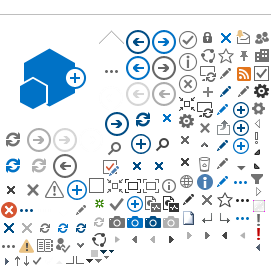SANCOR Newsletter Issue #171: September 2002
Coelacanth Programme exhibited at World Summit
The South African Coelacanth Conservation and Genome Resource Programme featured an exhibit at the IUCN (The World Conservation Union) exhibition at the World Summit on Sustainable Development. The Coelacanth Initiative is a project co-ordinated and managed by the South African Institute for Aquatic Biodiversity (SAIAB), which is national facility of the National Research Foundation. Representatives from the Coelacanth Programme made use of the exhibit to promote the multi-disciplinary, multi-organizational project, which endorses aspects of conservation, sustainability, social upliftment and excellence in science and education.
The Programmes Manager, Dr Tony Ribbink, who recently returned from a capacity building expedition to Mozambique, argues that the Coelacanth Programme is developing sustainability of biophysical marine resources by encouraging the youth of southern and eastern Africa to choose careers in these disciplines. "The philosophy underpinning the programme is that sustainability is an imperative of the future. Our task is to prepare the youth to be informed, responsible custodians of that future." He claims that by using the coelacanth as an icon, and demonstrating the excitement of ships, submarines and deep-sea exploration, as well as excellence in science, the present generation of scholars and students is being encouraged through special initiatives to choose careers in marine sciences and conservation.
The Coelacanth Programme exhibit included an interactive GIS (Geographic Information Systems) component, which allowed delegates to view details of the canyons of Sodwana Bay, the location where coelacanths were first seen in November 2000. The GIS can be viewed in three forms; a movie clip, which starts with a relief map of Africa and ‘zooms in’ to enlarge the South African coastline, KZN coastline and Sodwana Bay, into the canyons up to the point where the coelacanths were spotted and finally a motion clip of the filmed coelacanths. A simulation of Wright Canyon allowed users to move through the canyon and investigate caves by using the keyboard control keys. Thirdly, all the spatial information collected from the Coelacanth Programme could be viewed in an interactive atlas format enabling users to view different combinations of data relating to the Programme.
Ms Lucy Scott (left) shows a delegate the various uses of GIS, a component of the Coelacanth Programme
Geodatec compiled the GIS for the display and a satellite image poster of the KwaZulu Natal coastline. These were complemented by the bathymetric maps produced by Marine GeoSolutions as well as educational and promotional posters, designed and produced by students as part of the capacity building aspect of the Programme and a short documentary film compiled during the exploratory coelacanth expedition in April this year.
As part of the Science Forum, a parallel event to the World Summit, Dr Ribbink presented a lecture entitled,
Global state of aquatic biodiversity – doom or dawn? in the CSIR Conference Centre. He also presented back-to-back lectures at the Summit entitled: Sustainability and Development through the South African Coelacanth Programme and Sustainability and Development in Lake Malawi/Niassa/Nyasa Basin: current scenarios and NEPAD opportunities.
